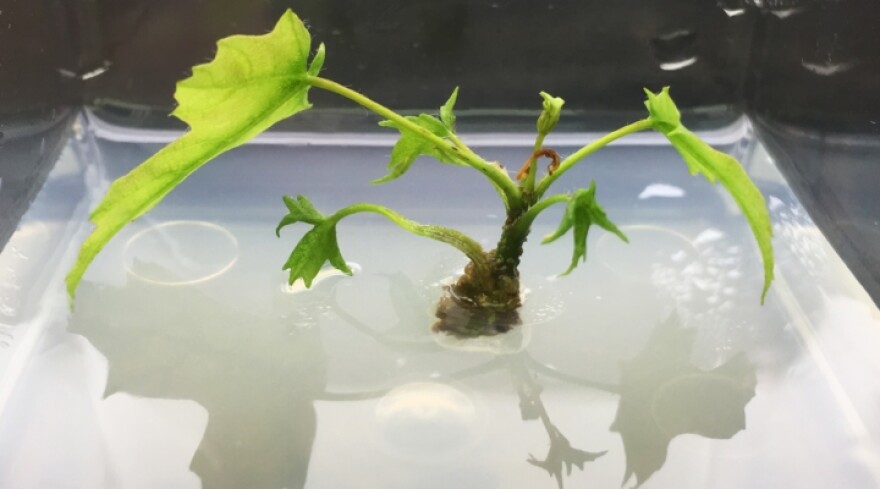Real maple syrup is a sweet treat, but it often comes with a hefty price tag. This is why researchers are working to develop a new method to produce syrup.The process involves cloning.
Funded by a grant from the Northern New York Agricultural Development Program, scientists are working to clone sweeter maple trees that produce more sugar sap. The cloning itself doesn’t cause trees to have more sap; it all depends on the original tree that’s being cloned.
Cornell University plant pathologist Keith Perry said regular maple trees yield a soluble sugar concentration between 2 percent and 5 percent. But certain “sweeter” trees have double that percentage. By cloning these trees, syrup can be produced cheaper. Perry, who also serves as director of the Uihlein Foundation Seed Potato Farm in Lake Placid said once the process is smoothed out, it could be the future of efficient maple syrup production.
“The general principle is that if you can plant trees that produce twice the amount of sugar than the average tree, that’s going to save a lot of money in the production process and energy cost, and net the producers

more profits,” Perry said. “And it will be overall an environmentally more sustainable process.”
In the lab, a single tree can produce 10 cloned saplings in one year. The next year that number jumps to 100. But there’s a catch. Maple trees are slow growers, taking 15 and 30 years to reach their full size.
Even with a surplus of ideal maple trees, they all must mature before they can be tapped for sap. As a result, Perry said this method of production won’t be launched anytime soon.
“A best-case scenario might be in a decade, we would have high sugar producing trees in nursery operations that are available to plant,” Perry said. “[Hopefully] those tress would go into production 20 or 30 years later, so this is a really long term process.”
In addition to the trees’ long grow time, there are other variables that have presented roadblocks for scientists. For example, it can be challenging to get a plant to grow successfully in tissue culture within a lab.
Tissue culture refers to plants grown in a test tube in a sterile substrate like gelatin, Perry said. They’re grown in the absence of any other microorganism, which means every plant is genetically identical and can produce a high sugar producing tree.
Perry also said that once the plants grow enough, transplanting them into a more suitable environment can be challenging.
“The limiting factor at this point is getting the plants to form roots and then being able to transfer the plants with roots into the green house. And as far as needed research, it’s this latter step of getting the plants to form roots that will be the next challenge.”
After the project is established and there are functioning sweet trees, Perry said it will be a long time before everyone will be buying cheaper syrup.
“The market is really huge, so I think the benefits will be much more local to begin with. I don’t think you’re going to be seeing any differences in the prices of maple sugar in the market for many, many decades to come.”
Perry credited the Northern New York Agricultural Development Program for its foresight in this “high risk project.” He said he hopes that as the project develops, more organizations will provide financial support for research.




